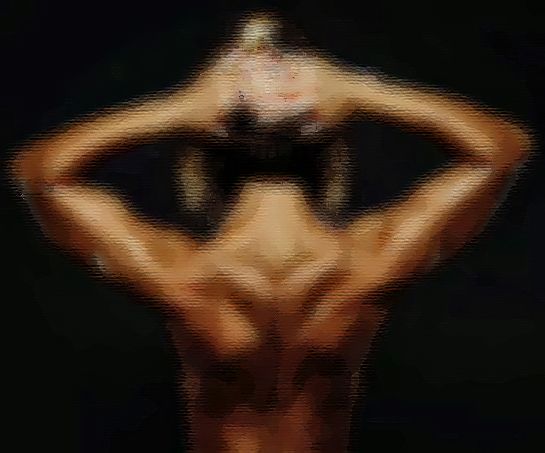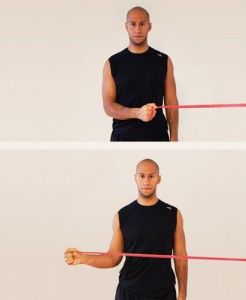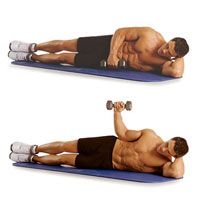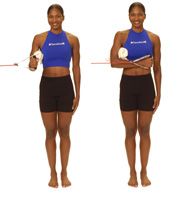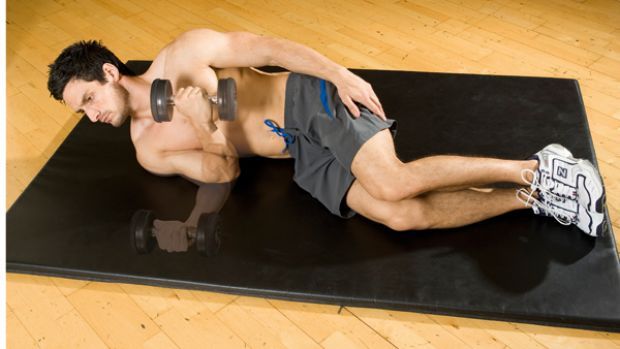The previous post in this series, “Why You Need To Strengthen Your Shoulders”, described the role of the rotor cuff and other muscles in the stabilisation of your shoulder.
This post will outline some of the exercises you can do to strengthen these muscles so that you have a long paddling career with minimum injuries.
Firstly, here is a reminder of the muscles we are aiming to work on.
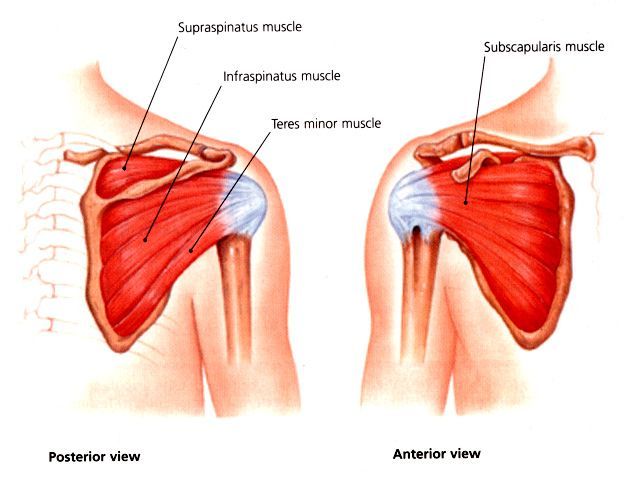
The Exercises
Shoulder Abduction
This exercise is initiated by the supraspinatus muscle. This “cable” is located at the top of the shoulder. Its purpose is to raise the arm and move it away from the body.
- Hold arm down by your side with palms facing in.
- Grab the resistance band or dumbbell and, keeping your elbow straight, exhale and lift the band out to the side with your thumbs facing up.
- Lift the band to about shoulder level and do NOT lift the band above shoulder level.
- Hold for a few seconds, taking care not to shrug the shoulders and slowly lower back down to starting position at your sides.
- Try 1-3 sets at 10-15 reps, each side.

External Rotation
This exercise works upon the teres minor and infraspinatus muscles that externally rotate the shoulder. They are found in the back of the shoulder.
Option 1. (with resistance band)
- Attach resistance band to a stationary object.
- Stand with left side to the attachment point.
- Hold resistance band with your affected hand and keep wrist straight.
- Begin with the right hand directly in front of the body with elbow bent at 90-degrees.
- Keep your elbow close to your side as you slowly stretch the band by moving your arm outward until back of hand faces backward. Keep wrist neutral and unbent. Shoulders kept square with minimal rotation at the trunk.
- Try 1-3 sets for 10-15 reps, each side.
Option 2. (sidelying with light dumbbell)
- While lying on your side in a fetal-type position, keep your shoulders square.
- Hold one dumbbell in your outside (top) hand with elbow at side and bent at 90-degrees. Keep wrist straight.
- While remaining on your side, with elbow in, raise dumbbell towards the ceiling and up to your side. (Motion resembles opening a sliding glass door with a newspaper wedged between your elbow and side)
- Try 2-3 sets for 10 reps, each side.
Internal Rotation
This exercise uses the subscapularis muscle of your “cable system.” The subscapularis is at the front of the shoulder and it internally rotates the shoulder.
Option 1. (with resistance band)
- Attach resistance band to a stationary object.
- Stand with right side to the attachment point.
- Hold resistance band with right hand.
- Start with right hand out in front of the body, elbow bent at 90-degrees.
- Slowly stretch band away by moving arm inward until back of hand faces forward. Keep wrist neutral and unbent as well. Shoulders also kept square with minimal rotation at the trunk.
- Try 3 sets for 10 reps, each side.
Option 2. (with dumbbell)
- While lying on your side in a fetal-type position like in external rotation exercise, keep shoulders square.
- Hold one dumbbell in your inside (bottom) hand with elbow at your side and bent at 90-degrees. Keep wrist straight.
- While keeping on your side and elbow tucked in next to the body, raise the dumbbell up towards the opposite top shoulder.
- Try 3 sets for 10 reps, each side.
NOTE:
- Because the rotator cuff muscles are smaller muscles compared to your legs and back, using nothing heavier than 1.5-2 kg kettlebells if you’re a woman, 2-3.5kg if you’re a man. Exercise bands like Therabands are great substitutes in this situation!
- Know your body and start slow. You should be going for “the burn” in repetition.
- No pain. If it truly hurts, listen to your body and stop.



